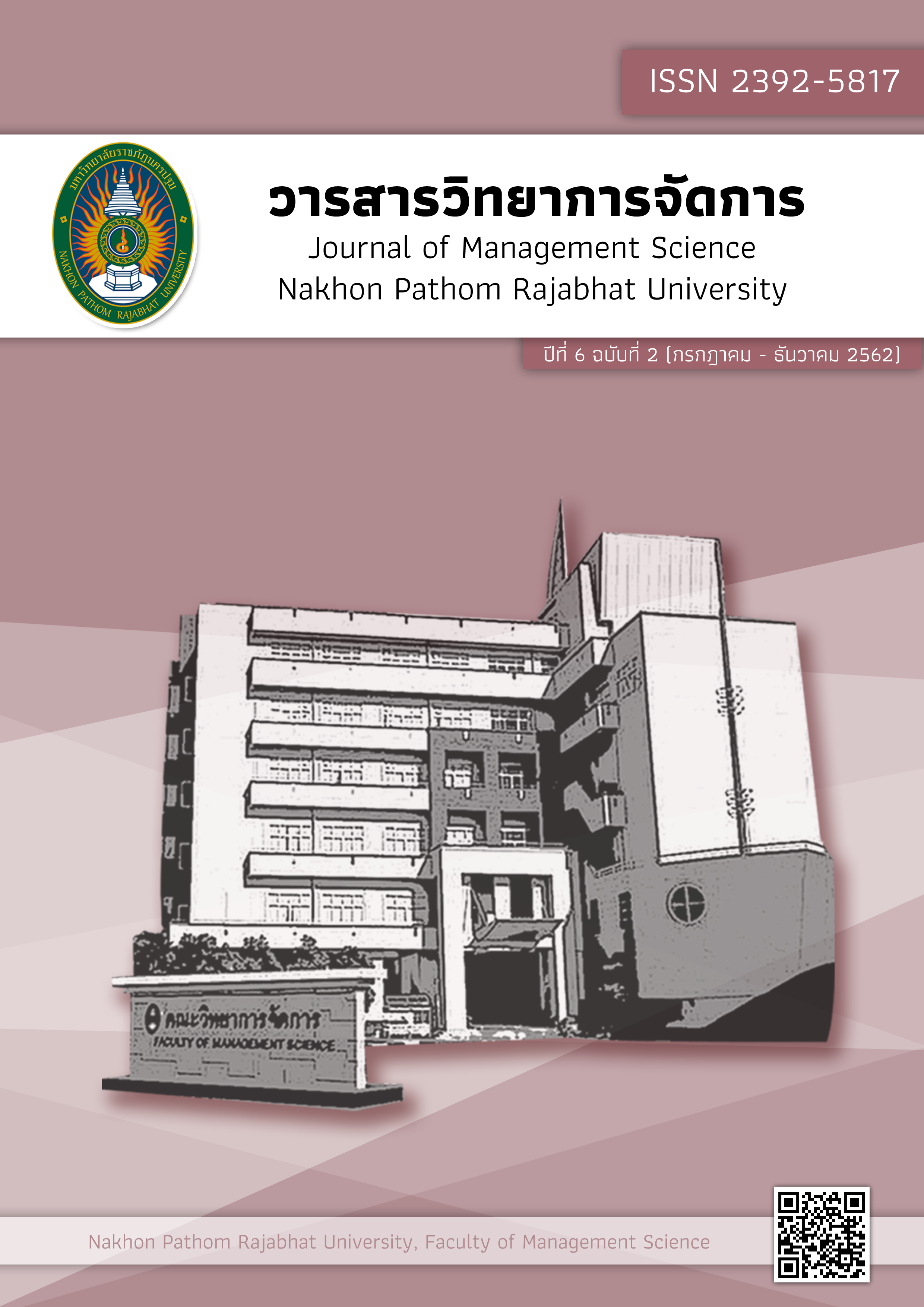The study of Local Healthy Food from Identity of Community-based Tourism for Health Tourism Destinations in Western Thailand: A Case Study of Maha Sawat Canal Community-based Tourism, Maha Sawat Sub-district, Putthamonthon District, Nakhon Pathom Province
Main Article Content
Abstract
This research aimed to: 1) study the community context in community-based tourism at Maha Sawat Canal; 2) study the local healthy food in Maha Sawat Canal Community and; 3) invent the stories and cooking lesson in local healthy food based on Maha Sawat Canal Community identity. A qualitative method and participatory action research were used by the research team and local people to develop guidelines for promoting community-based tourism development through food story tourism activity. Additionally, this provided job opportunities to local communities, and leveled up to local healthy food learning tourism.
The research result were: 1) the tourism identity of Maha Sawat Canal community was lotus field tour, Learning Center of Thai rice cracker at Ban Sala Din, orchid garden, Ban Gac Fruit Juice, orchard tour and organic rice field tour. The identity local ingredients were, for example, rice, Thai morning glory, Madan leaf and fruit, Tamarind leaf and pomelo. Fishes were main meat, for example, Nile tilapia and snake-head fish. The research result from in-depth interviewed and focus-group discussion about local food revealed 53 local recipes. Most of them were curry without coconut milk. Local vegetables and herbs were main ingredients. It was because Maha Sawat was located along the canal, where food resources were available for variety of menu. 2) According to an in-depth interview, most of the food were defined as local dishes and has been recognized for more than 10 years. 70 percent of ingredients were locally available. Therefore, it was easy for applying cooking to a tourism activity. 3) There were 6 set of local healthy menu from the creation of local healthy food menu set through demonstration and interview. History, background and way of life in Maha Sawat were related to create stories and learning method of local food, Thai cuisine, herbal use and wise wisdom. Moreover, due to convenient transportation and short distance from Bangkok Metropolitan Region, and the trend of city life, the a la carte menu, such as fried rice in lotus leaf, rice and chili paste in lotus leaf and Thai fried noodles, was found as menu for tourists.
Article history : Received 4 February 2019
Revised 10 Mar 2019
Accepted 12 Mar 2019
SIMILARITY INDEX = 0.00
Article Details
The views and opinions of the article appearing in this journal are those of the author. It is not considered a view and responsibility of the editorial staff.
References
เกศศิณี ตระกูลทิวากร. (2557). รายงานการวิจัยเรื่องการส่งเสริมการท่องเที่ยวโดยใช้ภาพลักษณ์ของอาหารท้องถิ่น. กรุงเทพ ฯ: สำนักงานกองทุนสนับสนุนการวิจัย.
เพ็ญนภา ทรัพย์เจริญ. 2540. อาหารพื้นบ้าน 4 ภาค. กรุงเทพฯ: สถาบันการแพทย์แผนไทย กรมการแพทย์ กระทรวงสาธารณสุข.
สมศรี เจริญเกียรติกุล และคณะ.(2545). คุณค่าอาหารไทยเพื่อสุขภาพ. [ออนไลน์].ค้นเมื่อ 8 ธันวาคม 2560 จาก https://www.thaifoodtoworld.com/home/researchdetail.php?research_id=40.
สุทธิพงษ์ สุริยะ และวันดารา อำไพพอน. (2548). Food and Travel ลาว. กรุงเทพ ฯ : บ้านพระอาทิตย์.
สุนี ศักดาเดช. (2549). อาหารท้องถิ่น. จันทบุรี: คณะวิทยาศาสตร์และเทคโนโลยี มหาวิทยาลัยราชภัฏรำไพพรรณี.
โสรัจจ์ วิสุทธิแพทย์. (2557). ภูมิปัญญาอาหารท้องถิ่น: การจัดการเพื่อส่งเสริมการท่องเที่ยวในภาคตะวันออก. ปรัชญาดุษฎีบัณฑิต สาขาวิชาวัฒนธรรมศาสตร์ มหาวิทยาลัยมหาสารคาม.
อำไพ พฤติวงพงศ์กุล. (2551). อาหารพื้นบ้านไทย ในตำราวิชาการอาหารเพื่อสุขภาพ. กรุงเทพ ฯ : กองการแพทย์ทางเลือก กรมพัฒนาการแพทย์แผนไทยและการแพทย์ทางเลือก.
Chang, R. C. Y., Kivela, J., & Mak, A. H. N. (2010). Food preferences of Chinese tourists. Annals of Tourism Research. 37(4), 989-1011.
Fathimath A. (2009). The role of local food in Maldives tourism: a focus on promotion and economic development. Auckland University of technology.
Fields, K. (2002). Demand for the gastronomy tourism product: motivational factors. In A.-M. a. G. R. Hjalager (ed.), Tourism and gastronomy (36-50). London: Routledge.
Hjalager, A.M., & Richards, G. (eds.). (2002). Tourism and gastronomy. London: Routledge.


